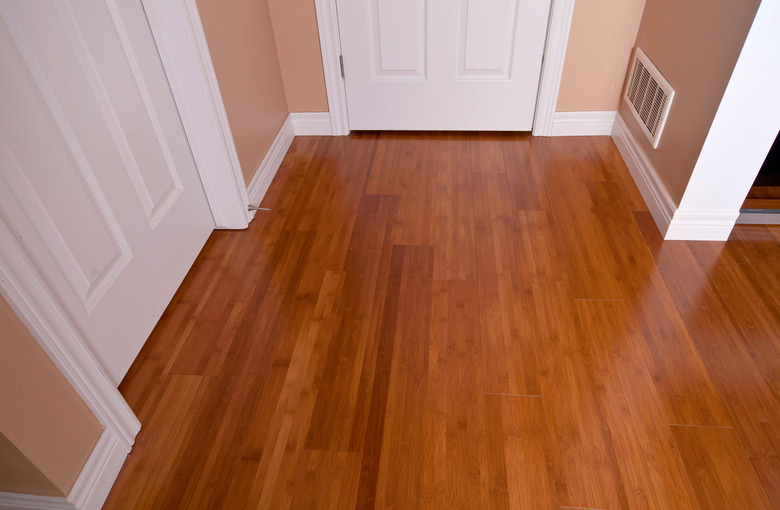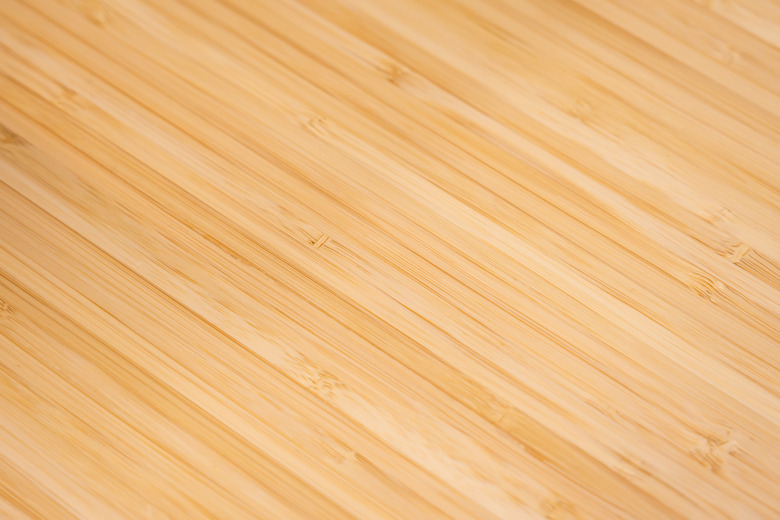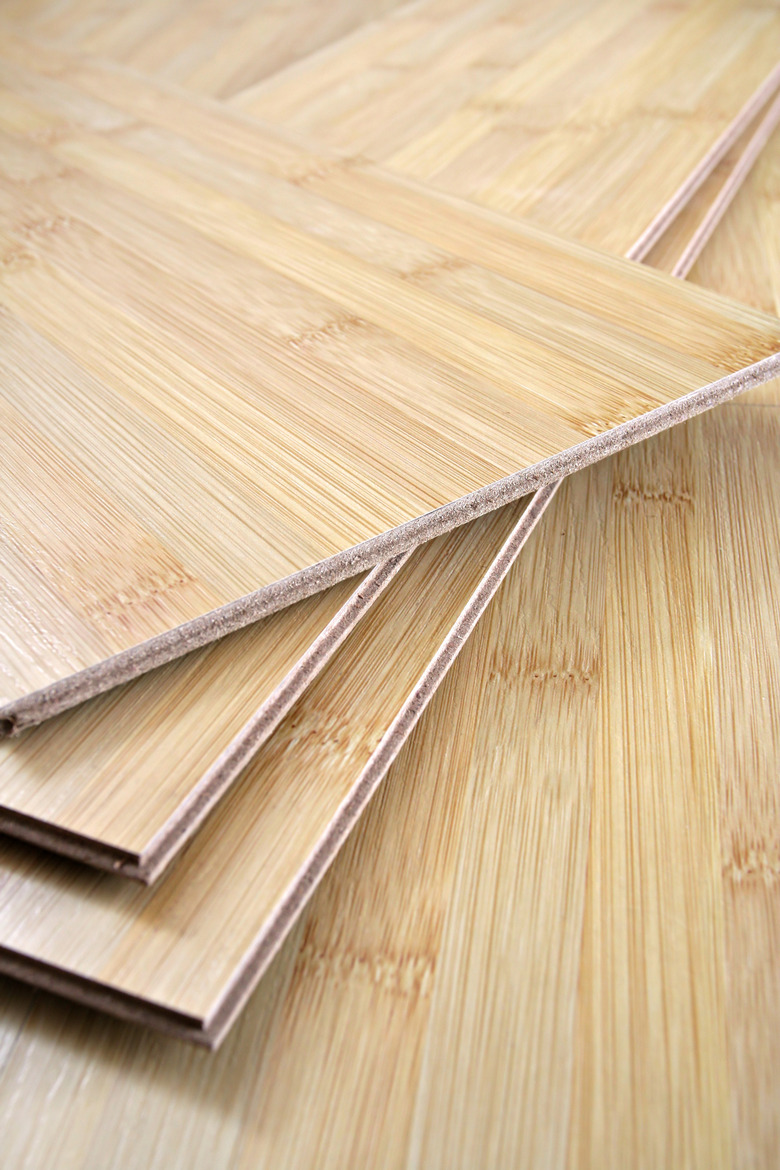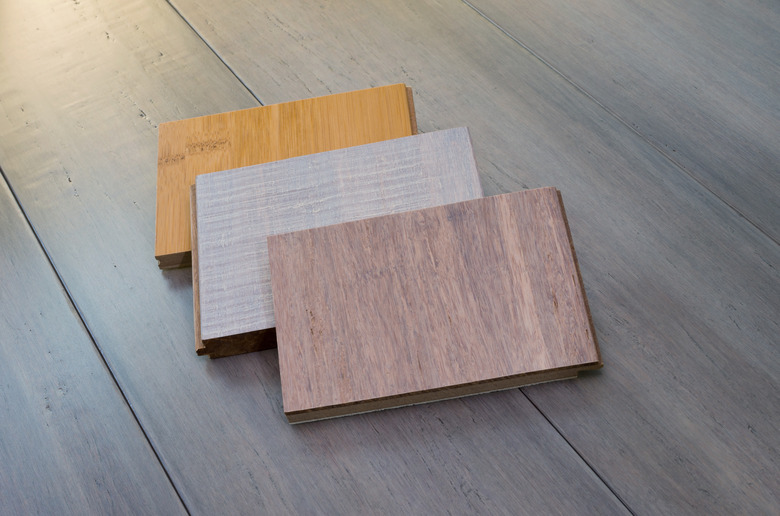Bamboo Floor Repairs: Fixing Scratches And Gouges
We may receive a commission on purchases made from links.
While bamboo flooring is designed to be durable, it's not completely impervious to light scratches or even gouges that reach deeper than the surface coating. Bamboo floors behave much like hardwood floors when it comes to preventing and dealing with scratches, and the same products used to repair wood-floor scratches can be used on bamboo. Larger bamboo floor issues may require a filler putty or even board replacement.
Fine Light or White Scratches
Fine Light or White Scratches
The least severe type of scratch on both bamboo and hardwood floors is also one of the easiest to mend. A white scratch that is so shallow you can barely feel it means it has barely marred the protective floor sealant.
- Go over this type of scratch with a damp white cloth and a drop of your usual bamboo or hardwood flooring cleaner.
- Rinse the cloth, wring it out, and wipe the scratch again to remove any floor cleaner residue.
- Wipe the area dry with another white cloth.
- Finally, rub the spot with a soft white cloth or floor-buffing pad. The scratch should be gone.
Scratches That Penetrate the Finish
Scratches That Penetrate the Finish
A wax or putty-fill stick designed for wood-scratch repair works well on bamboo floors too. These sticks resembling fat crayons are available in dozens of common wood colors. Pick a shade that best matches your bamboo floor and if you have an extra piece left over from installation, take it with you when shopping for fill sticks at a nearby flooring or home-improvement store. If you are unable to find an exact match, go with a shade slightly darker than the floor, as it helps better hide the repair than wax that's too light.
- Clean the area with a little water and your usual wood-flooring cleaner, applied with a damp white cloth. Rinse the cloth, wring it out, and wipe the area again to remove cleaner residue.
- Wipe the area dry with a lint-free white cloth. Make sure the spot is completely dry before applying the filler.
- Rub the fill stick over the scratch, working at an angle across the scratch as you move down its length. This helps the wax or putty material fill the scratch.
- Rub the edge of a thin, plastic, or cardboard gift card over the filled spot to remove excess filler. The sample cards sent in the mail with credit card offers and other junk mail are ideal for this task.
- Rub the surface of the filled spot with the face of the card to level the repair.
- Gently buff the floor on and around the repair location with a lint-free white cloth. This should remove most of the filler residue as well.
- Pick up and discard any small, waxy bits removed from the repair.
Larger Holes, Chips, and Gouges
Larger Holes, Chips, and Gouges
In cases where most of the plank is still in good shape other than a hole or gouge, the damage can be filled with wood putty. Select a water-based, quick-drying putty that doesn't shrink, as some putties shrink and crack and could pop out of the hole over time. One putty product varies greatly from the next, so read the directions carefully. Many suggest filling deep holes in layers, allowing ample drying time between applications. Look for a product available in a color similar to your bamboo floor or one that can be tinted to match.
- Wipe away dust and debris from the damaged area using a lint-free cloth.
- If the cloth snags or if you feel any rough areas around the hole, sand those with fine-grit sandpaper, working in the direction of the grain. Remove the dust with a damp cloth, tack cloth, or vacuum cleaner with a hard-floor setting.
- Mix the filler product as directed on the label and then apply it to the hole with a plastic putty knife in thin layers or as recommended by the manufacturer. Scrape away excess filler from the area with the putty knife.
- Allow the filler to dry for as long as is recommended on the product label. Some products may be speed dried with a hair dryer set to low or medium.
- Apply more layers of filler as needed, allowing ample drying time between each application. Once the hole is filled and the putty is dry, gently sand the area with fine-grit sandpaper, following the grain of the bamboo. Sand just the filler material, doing your best not to scratch the floor.
Extreme Board Damage
Extreme Board Damage
If an extremely heavy or sharp object falls on your bamboo floor, some boards may be damaged beyond repair. In this case, some of them may need to be replaced. Ideally, you'll have some boards left over from installation or at least the receipt or product literature noting the specific color and board style. Purchase or order a few more boards than necessary.
If you have a click-lock floor, the boards should be fairly easy to replace yourself by cutting and removing the old board. If they're nailed in some places, you can still do the job yourself. If they're glued down, call a professional to do the job instead, as removing all of the old material will be incredibly difficult.
- Set the depth of your saw to match the board thickness using the replacement as a guide so you don't cut through the subfloor. Make two cuts down the middle of the damaged board, separating the cuts by about an inch.
- Use a chisel and mallet to chip out the middle section of the damaged board and then loosen the board at each corner.
- Tug out the damaged board pieces. If they're difficult to remove, use your chisel or a pry bar to coax them out. Be careful not to damage the neighboring floor boards.
- Clear out the gap or vacuum it to ensure no debris remains in the hole slated for the new board.
- Set the replacement board next to the hole so the grooved side lines up with the tongue of the intact board nearest the hole. If the new board must be cut to fit, as may be the case near a wall, measure and mark it for cuts.
- Cut the board to size as needed using a circular saw, jigsaw, or handsaw. Cut the bottom of the groove off the replacement board. For some flooring, a utility knife is enough to do the trick, but for others, a jigsaw works best.
- Test fit the board in the hole. Make adjustments as needed to get it to fit into the hole.
- Lift the new board back out of the hole and apply a bamboo-flooring adhesive to the back side. Press the board back in place. If you prefer not to permanently adhere the board to the subfloor, apply glue along the tongue edge of the nearest adjacent board.
- Secure the new board in position using weights or heavy-duty tape as appropriate until the glue dries.
Preventing Future Damage
Preventing Future Damage
The best way to prevent scratches on a bamboo floor is with regular cleaning, including sweeping several times per week. Kick off shoes once you have entered the home and place your shoes on a mat near the door. At the very least, encourage all household members and guests to wipe their feet on the doormat before walking indoors. Pick up rocks or small debris when you notice them.
Use felt furniture pads under furniture that may slide or shift during use. For chairs that slide, such as at the dining room table, add protective feet or felt to the bottom of each chair leg. Chair legs commonly cause minor floor scratches.



